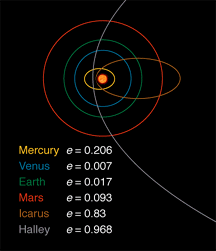A diagram showing the elliptical orbits of some solar system objects.
Click on image for full size
Kepler's 1st Law: Orbits are Elliptical
With Tycho Brahe's observations, Kepler set out to determine if the
paths of the planets could be described with a curve. By trial and
error, he discovered that an ellipse with the Sun at one focus could
accurately describe the orbit of a planet about the Sun.
Ellipses are described mainly by the length of their two axes. A
circle has the same diameter whether you measure it across or up and
down. But an ellipse has diameters of different lengths. The longest
one is called the major axis, and the shortest one is the minor axis.
The ratio of these two lengths determines the eccentricity
(e) of the ellipse; it's a measure of how elliptical it is.
Circles have e=0, and very stretched-out ellipses have an eccentricity
nearly equal to 1.
Planets do move on ellipses, but they are nearly circular. Comets are
a good example of objects in our solar system that may have very
elliptical orbits. Compare the eccentricities and orbits of the
objects in the diagram.
Once Kepler figured out that planets move around the Sun on
ellipses, he then discovered another interesting fact about
the speeds of planets as they go around
the Sun.
You might also be interested in:
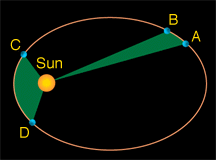
Kepler's second law he again discovered by trial and error. Kepler realized that the line connecting the planet and the Sun sweeps out equal area in equal time. Look at the diagram to the left. What Kepler
...more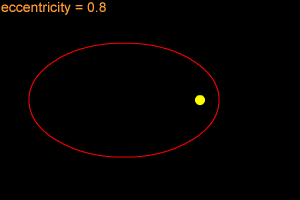
You may think that most objects in space that orbit something else move in circles, but that isn't the case. Although some objects follow circular orbits, most orbits are shaped more like "stretched
...more
Astronomers have discovered a new planetoid at the far edge of our Solar System. The new object, named Sedna, is probably almost as big as the smallest planet, Pluto. Sedna is very, very far away. It is
...more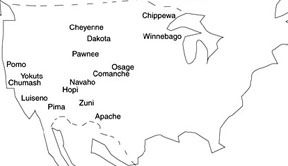
People from Asia crossed the Bering Strait into North America. These people were first in this new land and so they are known as Native Americans. Over time, these people broke into tribes (as seen on
...more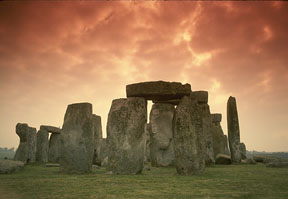
"The movements of the heavenly bodies are an admirable thing, well known and manifest to all peoples. There are no people, no matter how barbaric and primitive, that do not raise up their eyes, take note,
...more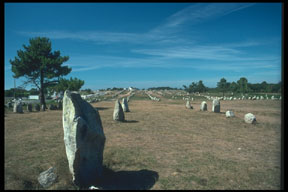
The stones of Carnac, France, are probably the most famous stones markings outside of those found at Stonehenge in England. There are many, many stones at Carnac. And these stones are very old too, the
...more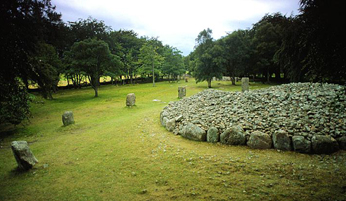
Not too far from Loch Ness, there lies three giant tombs made of stones. They are called the Balnuaran of Clava. The Balnuaran of Clava, giant tombs encased in stone, can be found close to Inverness in
...more


